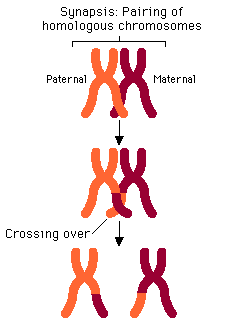
Each parent cell has pairs of homologous chromosomes, one homolog from the father and one from the mother. In meiosis, the maternal and paternal chromosomes can be shuffled into the daughter cells in many different combinations (in humans there are 223 possible combinations!). This ensures genetic variation in sexually reproducing organisms. Further genetic variation comes from crossing over, which may occur during prophase I of meiosis.

![]() Continue to Design of the Experiment II.
Continue to Design of the Experiment II.